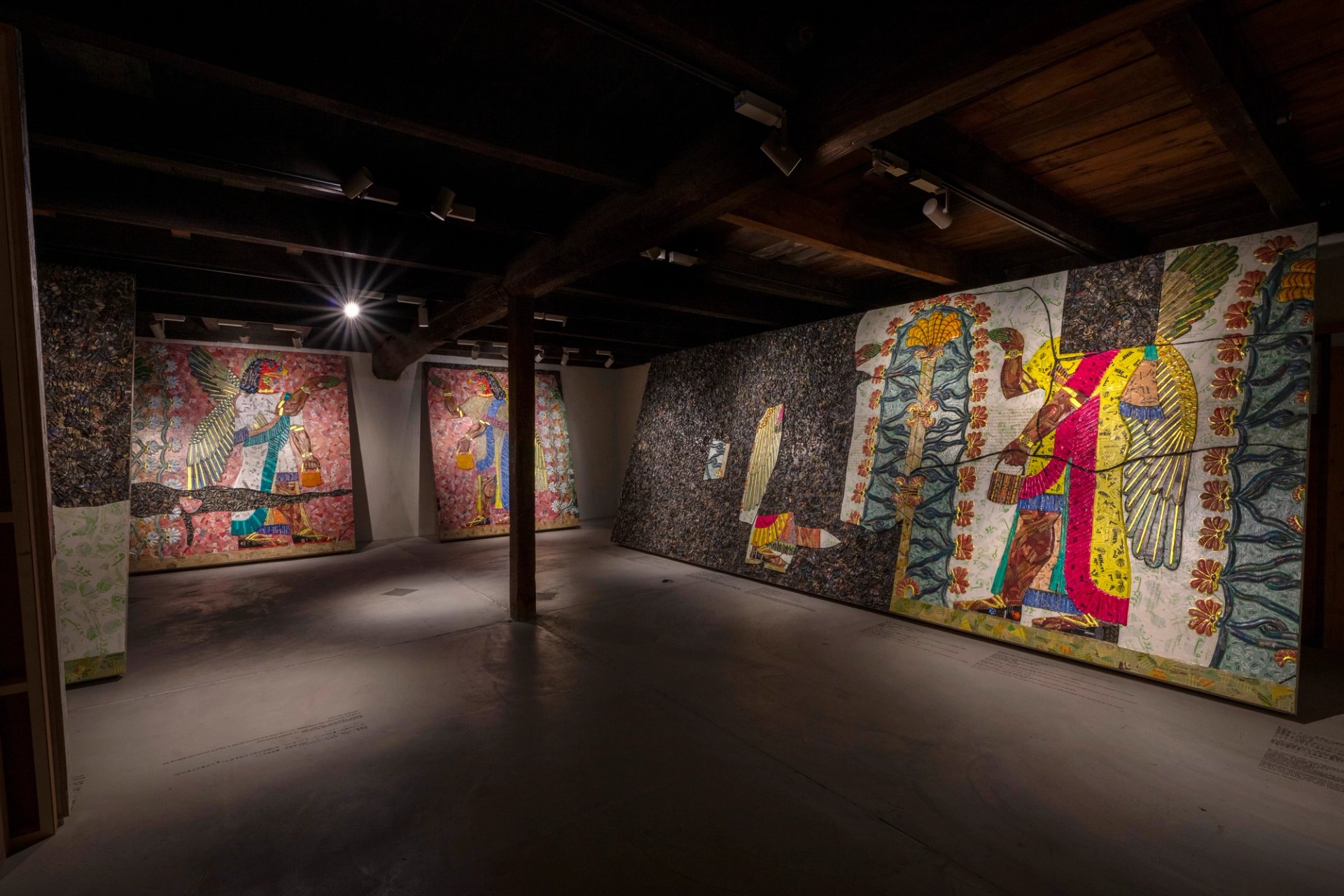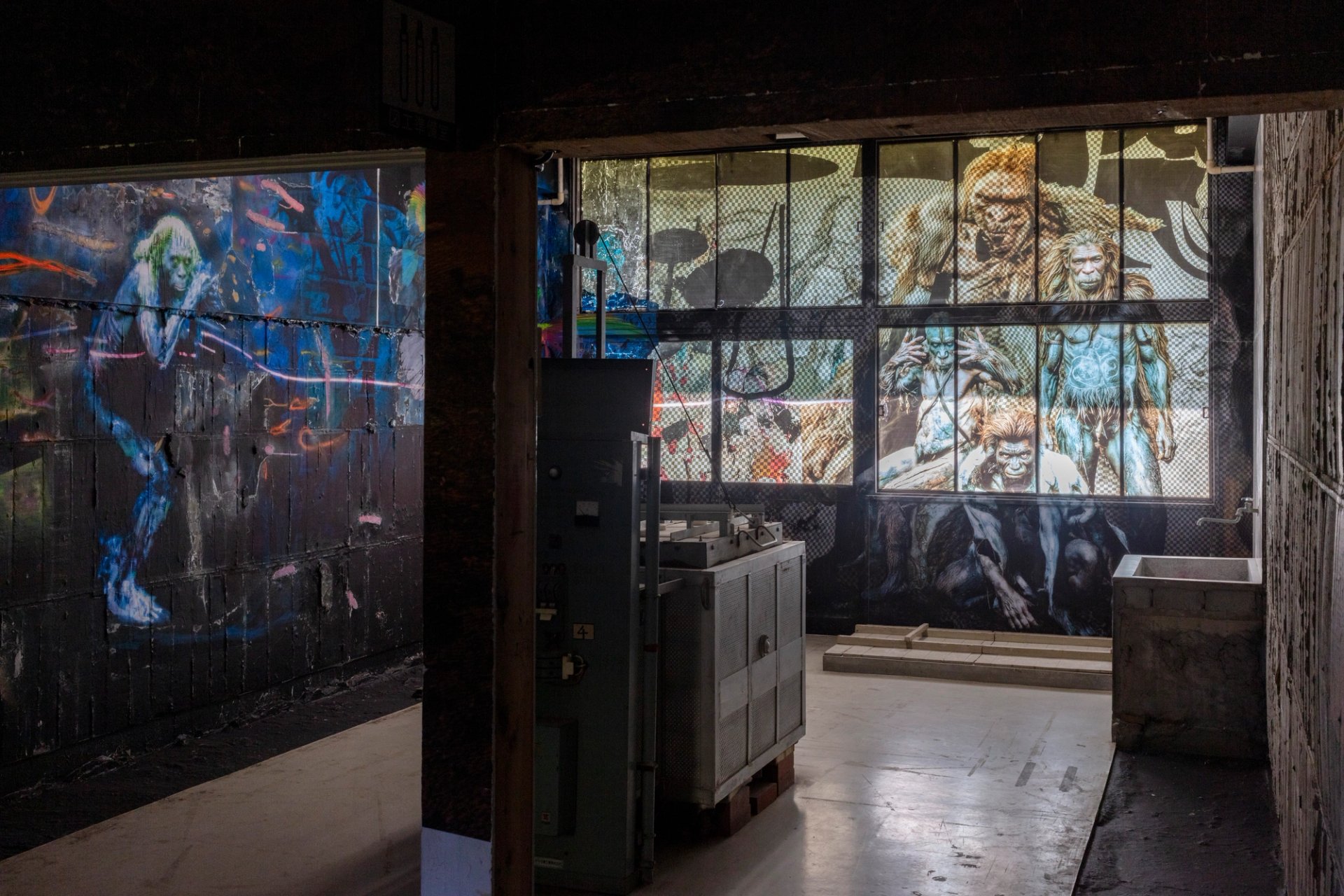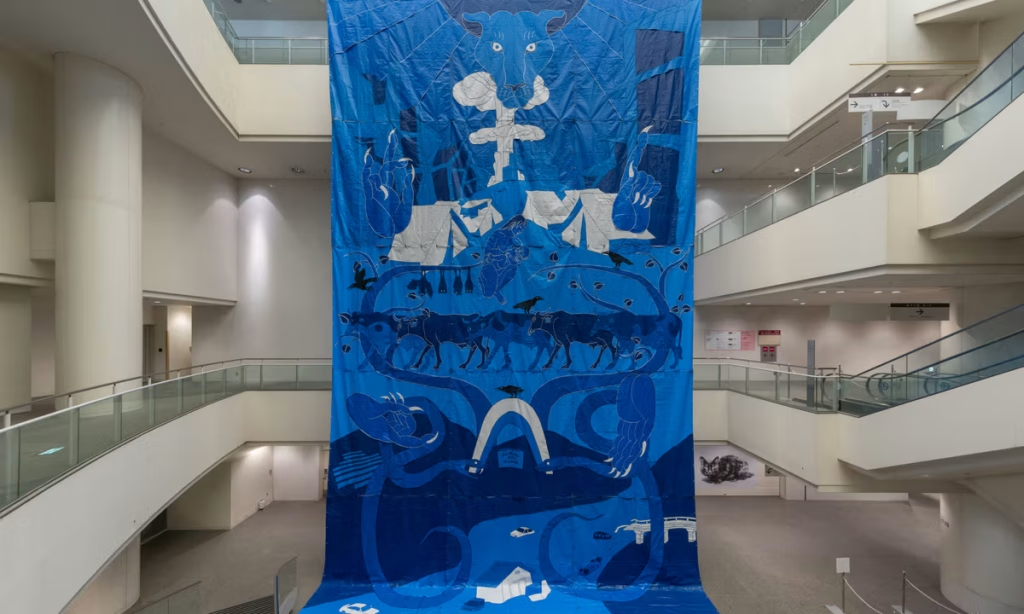At the sixth edition of the Aichi Triennale, which opened in Japan in September, wars and their effects loom large. The exhibition’s title, A Time Between Ashes and Roses (until 30 November), comes from a line in a poem by the Syrian poet Adonis about the cycle of destruction and rebirth, observed through nature. It resonates throughout this year’s event, where war, displacement, memory and the natural world are interwoven across venues in Aichi Prefecture, located to the west of Tokyo.
The curatorial direction of Hoor Al Qasimi, the first non-Japanese artistic director of the triennial, brings a sharp political consciousness. Front of mind for Al Qasimi are Palestinians in Gaza, where Israel’s warfare is consistent with the characteristics of a genocide, according to a United Nations special committee.
“It [has never been as] crucial as it is right now when we think about the devastation that is happening, the genocide and the ethnic cleansing. So it’s been a very emotional experience,” Al Qasimi said during a press conference before the triennial’s opening. “I echo many people when they say, none of us will be free until all of us are free. So free Palestine.”
Sasaki Rui’s Unforgettable Residues (2025) at the Aichi Triennale. ©︎ Aichi Triennale Organizing Committee Photo: Kido Tamotsu
The triennial examines the trauma of wars both past and present. One of the first works visitors see at the Aichi Arts Center in Nagoya is The Lion with Four Blue Hands (2025) by the Japanese artist Kubo Hiroko. The multi-storey tall, deep blue tapestry confronts viewers with apocalyptic scenes of flooded cities, disease and tents resembling a refugee camp leading up to the harrowing depiction of a mushroom cloud. The display marks the 80th anniversary of the atomic bombing of Kubo’s hometown of Hiroshima by the US. Images of sickly-looking animals and plants relate back to an aspect of the triennial’s theme emphasised by Al Qasimi: how war also contributes to environmental collapse.
The call to remember in Kubo’s tapestry is echoed in the work of the Palestinian duo Basel Abbas and Ruanne Abou-Rahme, who split their time between New York and Ramallah, in Palestine’s West Bank. Their video installation May amnesia never kiss us on the mouth: Only sounds that tremble through us (2020-22) juxtaposes scenes of communal song and dance from across the Arab world with footage of harrowing military raids. Inverted colours and a bass-heavy soundtrack create a tense atmosphere.
The evening before the triennial’s public opening, Abbas played a DJ set in a Nagoya nightclub alongside Baraari and Julmud, two Ramallah-based musicians with undeniable stage presence. Their high-energy and joyful performances pushed back against dominant Western media narratives, in which Palestinians are often only portrayed as either victims or perpetrators of violence.
Protests over prefecture’s ties to Israel
While the Aichi Triennale’s curation embraced the Palestinian cause, controversy erupted during the exhibition’s opening weekend over the prefecture’s Aichi-Israel Matching Program, a government initiative launched in 2022 to pair Israeli startups with Aichi-based companies. The programme has no direct ties to the triennial, but both are funded by Aichi Prefecture, a wealthy region known as the heartland of automotive, aerospace and robotics manufacturing in Japan. Activists entered an opening ceremony event to demand an end to the Aichi-Israel Matching Program.
“The Aichi government is normalising the world’s first AI-powered genocide and tech-driven apartheid,” an open letter from the protesters reads. The letter also took issue with Hideyuki Tomita, at the time the vice chairman of the triennial’s organising committee, and his role as president of Toho Technology, one of the companies taking part in the matching programme. Tomita has since resigned from the organising committee due to “personal reasons”, an Aichi Triennale spokesperson tells The Art Newspaper.
“Aichi Triennale respects the free expression of all, including its participating artists, to the fullest extent,” the spokesperson adds. “A Time Between Ashes and Roses is a platform embodying the idea that, through solidarity and our collective voices, we can foster a brighter future for generations to come.”
Cultural fusion
Artists featured in the triennial who signed the open letter include Abbas, Batool Qadi, Dala Nasser, Yasmin Smith, Priyageetha Dia and Michael Rakowitz, whose practice is informed by his Iraqi-Jewish heritage. His family was forced to leave Iraq after the Farhud in 1941, a pogrom in which more than 100 Jews were killed in Baghdad.

Michael Rakowitz’s The invisible enemy should not exist (2023) at the Aichi Triennale. ©︎ Aichi Triennale Organizing Committee Photo: Kido Tamotsu
“I am an Arab Jew showing in Aichi prefecture, the government of which is collaborating economically with a government committing genocide against the Palestinian people, purportedly in the name of the Jewish people,” Rakowitz tells The Art Newspaper. “As a Jew, I must speak up against this and do everything I can to urge those who are enabling these atrocities through economic and technological collaboration to cancel such agreements, and to stand in solidarity with the Palestinian people and the grassroots campaign in Japan to cancel the Aichi-Israel Matching Program.”
Rakowitz’s installation for the triennial takes over a historic ceramic shop in Seto City, transforming it into a hybrid café and art space. There, Rakowitz served what he calls “okonomiraqi”, a fusion of his own design—it combines okonomiyaki, a savoury Japanese pancake, with Iraqi flavors like cumin, date syrup and amba, a curried, pickled mango. In the back rooms, seven panels from his series The invisible enemy should not exist (2023) re-imagine looted Iraqi artefacts using Arabic newspapers and food packaging, reclaiming lost cultural heritage through everyday materials.
Immersive installations in forgotten spaces
Other artists took over empty Seto City venues. In a former public bathhouse, the Japanese glass artist Sasaki Rui’s Unforgettable Residues (2025) encased native plants in translucent glass slabs. Air and ash released in the process formed delicate bubbles, now glowing under soft light in the darkened rooms. The site, once a space for communal life in Japan before the onset of mass media, has become a venue for quiet meditation on nature, time and collective memory, says Iida Shihoko, the triennial’s chief curator.
Iida has been involved with the exhibition for more than a decade. The Aichi Triennale’s total budget for the three-year period of planning and staging this edition is ¥1.4bn (around $9.4m), including salaries for full-time staff over that time. The budget is partly funded by the government of Aichi Prefecture, plus grants and sponsorships. While the triennial is an international affair, the bulk of attendees are local to the prefecture.
“The main purpose is how we could contribute to the local community, the citizens in Aichi, through art and culture. It provides a platform and opportunity to appreciate and engage with art and culture,” Iida says.
One aspect of this year’s triennial Iida says is particularly resonant with Japanese viewers is the emphasis placed on the environment. An archipelago nation, Japan is vulnerable to the effects of climate change, like rising sea levels, coastal erosion and extreme weather events.

Adrián Villar Rojas’ Terrestrial Poems (2025) ©︎ Aichi Triennale Organizing Committee Photo: Kido Tamotsu
Other facets of Japanese society have informed international artists’ work for the AIchi Triennale. In Seto City, the Argentine artist Adrián Villar Rojas’s installation Terrestrial Poems (2025) transforms a decommissioned primary school that shuttered in 2020 due a lack of children to attend it, a phenomenon becoming more commonplace due to Japan’s aging population.
“It’s probably one of the most dystopian settings I’ve placed my work, ever,” says Villar Rojas. Walls are covered with densely collaged wallpapers featuring prehistoric human ancestors, from Homo sapiens to Neanderthals. Villar Rojas says he wanted to dive into the “tensions on how we could and should represent our ancestors”.
He adds: “Creating, reconstructing and speculating about our pre-history is extremely political.”
- Aichi Triennale 2025: A Time Between Ashes and Roses, until 30 November, various venues, Aichi Prefecture, Japan
